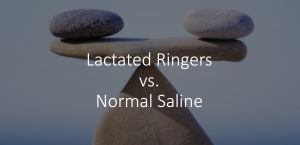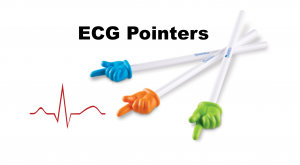This is the first post in the Elemental EM series, a rapid review of core emergency medicine topics. The goal is to present high yield facts as a foundation for practice and fundamentals for board review. Please enjoy the following bullet point summary on myasthenia gravis.
Author: Courtney Cassella, MD (@Corablacas, EM Resident Physician, Icahn SoM at Mount Sinai) // Edited by: Alex Koyfman, MD (@EMHighAK, EM Attending Physician, UT Southwestern Medical Center / Parkland Memorial Hospital) and Brit Long, MD (@long_brit)
Epidemiology/Pathophysiology

- 0.15-0.7% of the population, Most often 3rd to 6th decade
- Autoimmune: Acetylcholine receptor antibodies
- Causes receptor degradation, dysfunction, and blockade
- Impairs function at neuromuscular junction (NMJ) → decreased muscle strength
- Dysfunction of thymus gland or immune response to infectious antigens → abnormal thymus → often thymoma present
Clinical Presentation
- General weakness
- Proximal muscles
- Neck extensors
- Facial or bulbar muscles: Ptosis, diplopia, dysphagia, dysarthria, dysphonia
- Worsens: as the day progresses, with prolonged muscle use, hot temperatures, stress, infection
- No deficit in sensory, reflex, or cerebellar function
- Myasthenic crisis: Respiratory failure
- Precipitants: infection, surgery, rapid tapering of immunosuppressants, pain, menstruation, pregnancy, sleep deprivation, medications
- Evaluation for impending respiratory failure
- Inspiratory function
- Vital capacity <1L (<20-25 mL/kg)
- Negative inspiratory force <20 cm H2O
- Accessory muscle use
- Expiratory function
- Positive expiratory force <40 cmH2O
- Weak cough
- Difficulty counting to 20 in a single breath
- Upper airway (bulbar) weakness: dysphagia, nasal regurgitation, nasal quality of speech, staccato speech, jaw weakness, bifacial paresis, tongue weakness
- Inspiratory function
[table id=2 /]
Diagnosis
- Serologic testing – acetylcholine receptor antibodies
- Ice pack test – ptosis improves with ice pack application
- Edrophonium or neostigmine (Acetylcholinesterase inhibitor) → improves muscle strength
- Limited use in testing as may worsen weakness in other NMJ disorders or cholinergic crisis leading to respiratory failure.
- Caution: cardiac disease → may cause bradycardia, AV block, atrial fibrillation, cardiac arrest
- Differentiates myasthenic crisis versus cholinergic crisis

- Electromyographic testing → postsynaptic NMJ dysfunction
Treatment
- Neurology consult
| Acetylcholinesterase Inhibitors (Adult Dosing) | |
| Pyridostigmine | Neostigmine |
|
|
- Management of respiratory failure
- Induction with smaller doses: Etomidate, fentanyl, propofol
- Avoid use of depolarizing or nondepolarizing paralytic agents
- If paralytics are necessary → half-dose
- Immunosuppression: steroids, azathioprine, mycophenolate, plasma exchange, IVIG
- Thymectomy
Resources/References
- Handel DA, Gaines S. Chronic Neurologic Disorders. In: Tintinalli JE, Stapczynski J, Ma O, Yealy DM, Meckler GD, Cline DM. eds. Tintinalli’s Emergency Medicine: A Comprehensive Study Guide, 8e New York, NY: McGraw-Hill; 2016. http://eresources.library.mssm.edu:2744/content.aspx?bookid=1658§ionid=109437149. Accessed March 20, 2017.
- Patti, L. Edited by Robertson, J. and Koyfman, A. Undifferentiated Weakness: ED Focused Approach and Management. http://www.emdocs.net/undifferentiated-weakness-ed-focused-approach-and-management/
- Nickson, C. Myasthenia Gravis. LITFL. https://lifeinthefastlane.com/ccc/myasthenia-gravis/
- Wendell, LC and Levine JM. Myasthenic Crisis. Neurohospitalist. 2011 Jan; 1(1): 16-22. PMID:






